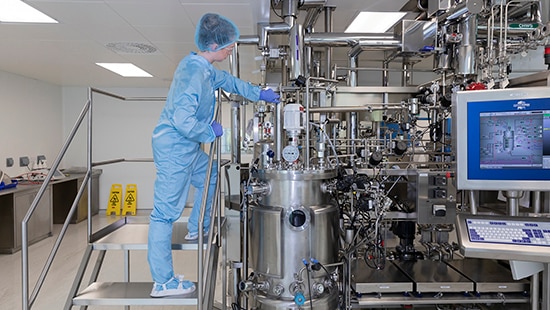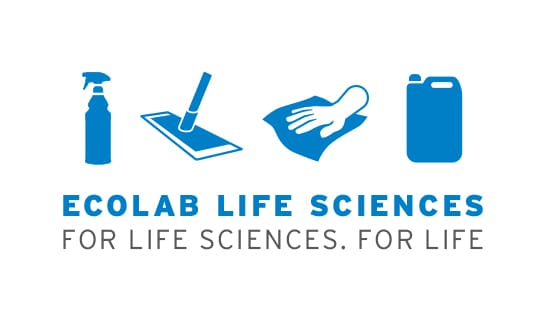Visually Clean and Beyond
For the most part, regulations around the world require that Personal Care and Cosmetics products (including those registered as OTCs in the US) not be adulterated or contaminated.

For the most part, regulations around the world require that Personal Care and Cosmetics products (including those registered as OTCs in the US) not be adulterated or contaminated. A manufacturer is required to meet these regulations by controlling critical steps in the manufacturing process to ensure that contamination does not occur. To do this, there are a variety of controls that can be put in place related to manufacturing and packaging processes, cleaning processes, employee hygiene, plant hygiene, raw material controls and employee training to name a few. In this article, we will focus on risks associated with cleaning procedures for critical processing equipment.
A cosmetic may be deemed adulterated under section 601(c) of the FD&C Act; 21 U.S.C. 361(c), if it has been prepared, packed, or held under unsanitary conditions whereby it may have become contaminated with filth, or whereby it may have been rendered injurious to health. The Modernization of Cosmetics Regulation Act of 2022 (MoCRA) reinforces the connection between preparation, packaging or holding under unsanitary conditions where resulting contamination may lead to serious injury or death.
Why Clean Processing Equipment
A company’s brand can be negatively impacted via social media within days if a consumer finds “defects” with a product. Brand image can also be damaged from reports of product audit or regulatory inspection findings, and in severe cases, a product recall. Defects or regulatory findings could be caused in many ways, not least by residues carried over from the previous production due to inadequate cleaning, or by flavors and viscosity changes due to microbiological contamination. Ultimately, manufacturers clean to minimize the risk of product contamination. Types of contamination include product from a prior batch or run, actives from an OTC/drug product, microbial contamination, or even contamination from cleaning products themselves.
How Clean Is Clean Enough
It seems that how much to clean to avoid contamination is subjective and open to interpretation. Levels of cleaning could be evaluated in three degrees of cleanliness – visually clean, residually clean, or microbially clean. Although these categories of cleanliness are related, each is connected to differing levels of consumer risk. Regulatory bodies charged with ensuring consumer safety have provided some guidance. In the following sections we will explore each level, the associated risk, and potential solutions.
Visually Clean
ISO provides a cleaning standard for the industry speaking to “visual cleanliness” in ISO 22716 / 2007: Cosmetics - Good Manufacturing Practices (GMP) [2], where cleaning is described as "all operations that ensure a level of cleanliness and appearance consisting of separating and eliminating generally visible dirt from a surface" (section2.8). This standard directs that all visual soil be removed from an equipment surface.
Of all types of contamination, this standard seems easiest to achieve and confirm, however, in practice, this is not always the case. There can be ambiguity in defining the “base state” or starting point. For example, what if the tank is stained, rouged, or somehow damaged, such that no one recalls the beautiful silver luster of the new stainless steel? How would one establish a visually clean standard? In a situation like this, a tank remediation or passivation could be performed to return the equipment to “base state” or a like-new appearance. Alternatively, through testing (residue, microbial) and risk assessment, a quality group and manufacturing group could align on a best-case current state and a new baseline.
How does one measure visually clean? The reality is that this is a test method, requiring a procedure, standardization, and perhaps calibration. Let’s explore a few variables involved in a measurement system for “visually clean”. Environmental conditions can significantly impact “visual assessment” of cleanliness. Lighting, or lack of light, can affect the ability to clearly view the surface. Thus, the procedure must include definition of lighting – specifying the light source, bulb type, angle of illumination, and so on. Maintenance of that light source could also be important, as the condition of the light bulb can deteriorate over time. In some cases, a preventative maintenance plan for the light source may be necessary.
The condition of the surface being inspected is important. For instance, a wet surface can appear different from a dry surface and can disguise the presence of a soil residue. Thus, the procedure must specify the surface condition, i.e., whether the surface is wet or dry for inspection.
The primary “instrument” or test device in a visually clean assessment is the operator. An operator must be assessed or qualified as capable of performing the test. Characteristics such as visual acuity, corrective lenses, ability to distinguish colors, etc. can be important in qualifying a technician for visually clean assessment. Once capability is established, the technician should be trained in proper inspection techniques following the written procedure.
Once these procedural requirements are defined, success criteria for the test must be established. There is no numeric test result to tie to visual assessment. In this case, a visual standard is necessary to ensure consistent measurement against the success criteria. This is often achieved through use of a visual standard created with photos of acceptable vs. non- acceptable views. Results should be documented following each cleaning.
Residually Clean
Even if equipment is cleaned to a “visually clean” standard, there can be residues present at levels not visible that impact consumer safety. For instance, some actives in OTC/drug product are not visually detectable such as chemical sunscreen ingredients. Also, detergents can leave residues impacting product quality if not rinsed sufficiently which may not be detectable by visual inspection.
One could propose that all detectable levels of product, OTC actives, and detergent should be removed to ensure a clean surface. This is not economical for manufacturers, as excessive amounts of time and water may be required. In the US, the FDA recommends a risk-based approach for OTC/drug products, which applies OTC cosmetics such that residues be reduced to a “safe level” for customer use. Often that “safe level” is based on a toxicology assessment, ensuring that the residual quantity carried into the next batch is well below an observable effect or an adverse event level. This implies that manufacturers know the residues that could be present, a safe level of those residues, a test method to verify the residue level, and a cleaning process that reliably removes the residues to that safe level. A cosmetic manufacturer should know their formulation, and thus have knowledge about the OTC actives or formulated ingredients that could pose a risk as residue. They typically have a test method already developed for the OTC active ingredient, as they likely test the final formulation to verify it is within specification. That test method may need modified or verified to accurately measure the lower residual actives following cleaning. Frequently, a non-specific test such as Total Organic Carbon (TOC) can be used to verify that non-active formulation ingredients are removed.
The greater unknown for the cosmetics manufacturer may lie with the cleaning detergent. A reputable supplier will be able to share the toxicity information for the detergent, and appropriate test methods for determining residue. Test methods may be specific (identifying the specific chemical component) or non-specific (indicating presence of a residue, but not the specific chemical). Often detergents used in cosmetic cleaning applications are tested by non-specific methods. Examples include Total Organic Carbon (TOC), conductivity, pH, and so on. In any of these cases, lab work is required to provide a correlation or translation from the non-specific method result to the actual residue level. The detergent manufacturer should be able to assist in this development.
Microbially Clean
Microbial contamination caused by bio burden in the equipment is becoming a greater concern and interest in the cosmetics industry. Once visual cleanliness and residue levels have been met, there remains potential for microbial residue on equipment that can contaminate a cosmetic product. If microbial contamination is extreme, as in a slimy, discolored area indicating biofilm presence, a visual inspection may detect the issue. Often microbial contamination is only detected through finished product testing, with high micro counts resulting in product rejection. Even if history shows no issues with microbial contamination for products manufactured in a facility, current product trends are moving towards more natural ingredients, which may increase the potential for introducing microbial flora not previously seen. In addition, preservative options are shrinking as the EU delists preservatives for use in cosmetic products, meaning less insurance in the formulation to counter microbial growth and contamination.
Microbial residues can be measured with either micro swabs or rinse water sampling, depending on equipment design and condition. There are unique challenges with microbial residue testing primarily related to access of sample points. Often, the areas in the equipment of highest risk for microbial growth are areas that are not easily accessed, such as pipes, equipment joints, or in some cases, equipment surfaces damaged by gouging or pitting. These areas that are difficult to access for sampling are also the most difficult to effectively sanitize, compounding the risk.
The primary method of controlling microbial residue on cleaned equipment is through a sanitization step. Thermal disinfection has been historically used by cosmetics manufacturers to reduce microbial residue. Formulation trends mentioned above are increasing the importance of maintaining good microbial control in the manufacturing equipment. Further pressures to control costs and reduce energy usage are resulting in companies moving away from the often-used hot water sanitization to chemical sanitization. Confidence that the thermal process is effective and operating in the validated state is highly dependent on temperature and time for all equipment contact points. Chemical sanitization is becoming more popular with assured microbiological effectiveness validated using a specific product, concentration, and contact time – often at ambient temperatures and for just a few minutes.
In Summary
Ensuring that cosmetic products and cosmetic OTC drugs (for US) are produced in an environment free from contamination is a regulatory requirement and is essential to the health and safety of the consumer. One key step the manufacturer can take is developing a cleaning and sanitizing program that effectively removes contamination from the manufacturing process. Those contaminants may be residues from products (actives or not), detergents, or microbial load. Cleaning to a “visually clean” standard is imperative and non-negotiable as a starting point. Development of the standard – the process, acceptance limits, training – are critical.
We have explored that just achieving “visually clean” may not be enough. Residues that are not visible may contribute to contamination impacting product quality, such as actives residues, detergent residues, or micro bio burden. Cleaning and Sanitization programs must address all these residue types with sufficient rigor to provide confidence that product quality is not impacted. A reputable cleaning and sanitization partner can help develop such a program.


